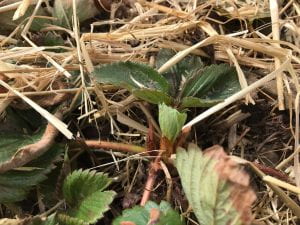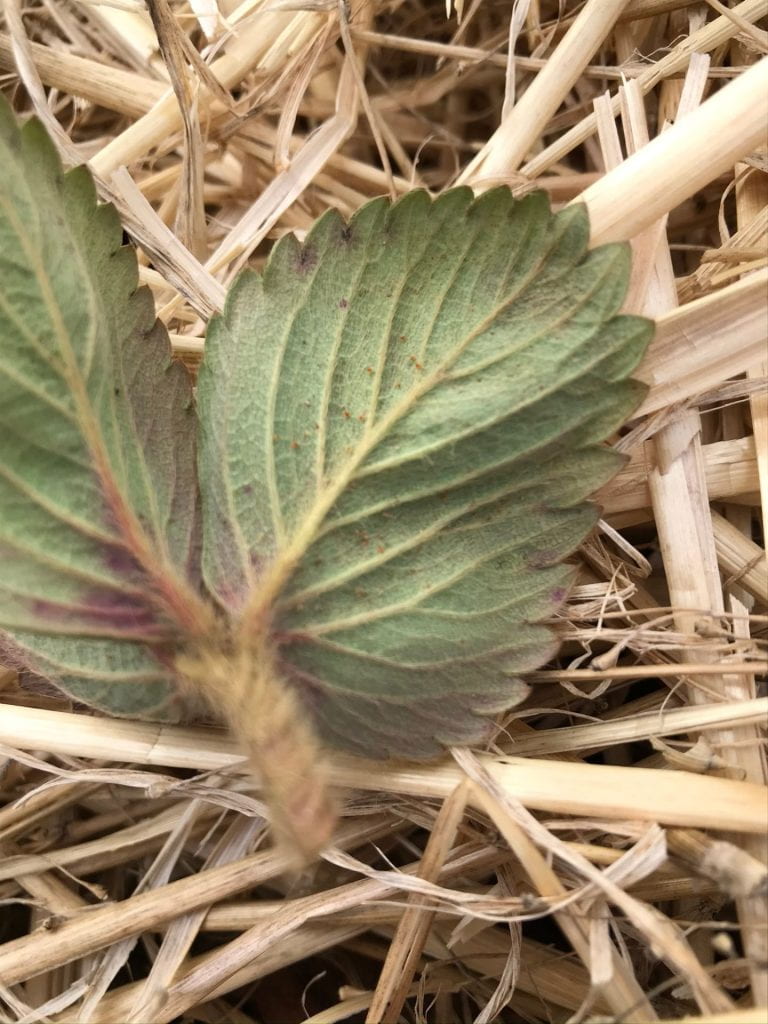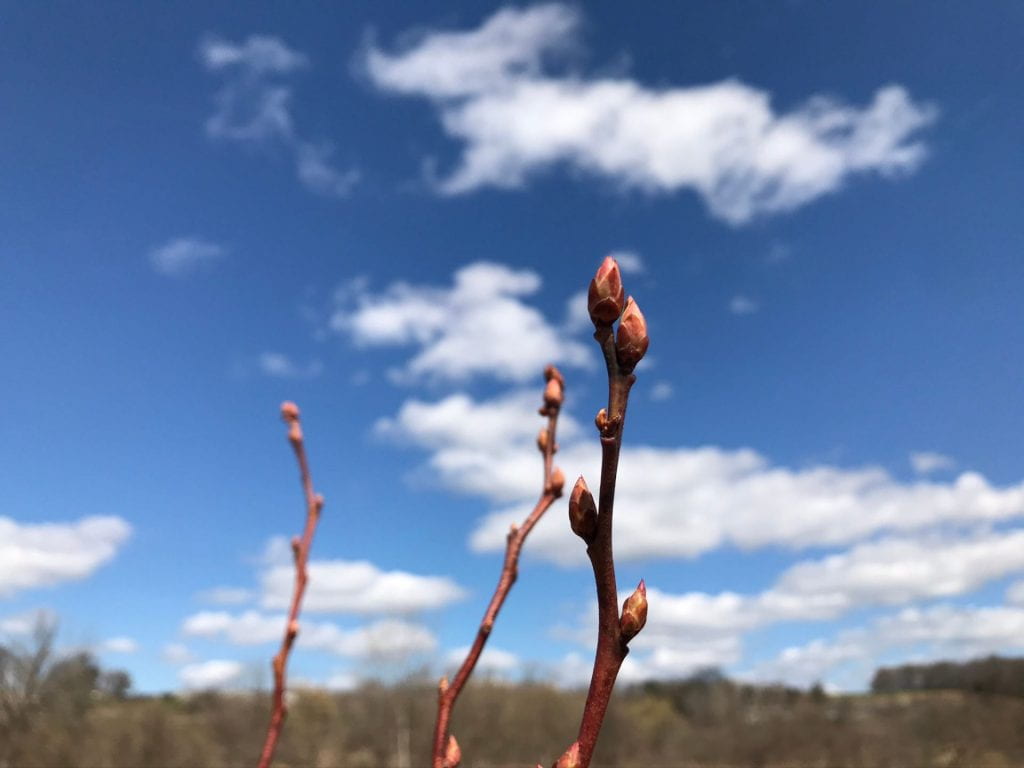
Strawberries: New leaves are starting to push under the straw. With no extended cold in the forecast, research has shown that it is better to remove straw early, if leaves are emerging, rather than basing on the calendar, or hoping to slow the crop down by leaving the straw. Plan on getting out there to rake it off soon. This is also the time to apply preemergent herbicides against annual weeds. Chateau or Devrinol can be used. Aim, Axxe and Gramoxone are options as more weeds emerge, or against winter annuals, but should be applied with a shielded sprayer.
Two-spotted Spider Mites overwinter on the plants. Check undersides of overwintered leaves – I’m seeing high populations in some fields. They are reddish during the winter, and they are a little sleepy with the cold, but will start moving and reproducing quickly with warmer weather. The threshold for spraying is 5 mites per leaf, or 15 out of 60 leaflets with 1 or more mites.


Blueberries: Depending on microclimate, buds are just swelling to early green-tip. If you haven’t already, this is the time to go after cane diseases (Phomopsis, Botrytis, Fusicoccum) with a delayed dormant spray of lime sulfur or copper. Several fungicides are also labeled for these, but I would save them unless you are dealing with a severe, recurring level of infection. As you are finishing up pruning, be sure to cut out any diseased canes and gall wasp galls. Start planning your spring herbicide applications. Blueberries have many herbicide options – the best choice depends on what your weed issues are.
Raspberries: Still looking pretty dormant. Copper, dormant oil or lime sulfur sprays can be applied for cane blights. This is the time to get started on weed control: Devrinol, Surflan, Sinbar for preemergent weeds (annuals), Axxe for post-emergent broadleaves, and Poast or Fusilade for perennial grasses.
